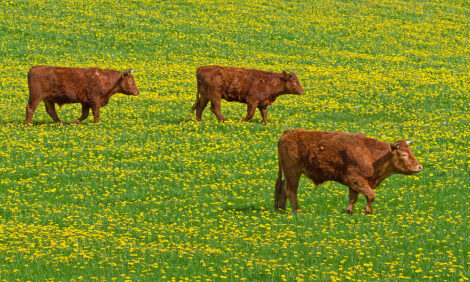



CAB: Feedlot Size Can Affect Cattle Grades
US - Feedlot sizes have been steadily increasing, while quality grades of cattle continue to drop. “We think that’s more than a coincidence,” says Larry Corah, Certified Angus Beef LLC (CAB) vice president.“Larger feedlots face a number of challenges that contribute to this decrease in quality grades.”
More than 50% of today’s cattle are fed at yards with more than 32,000-head capacity. Data from CAB’s Feedlot Licensing Program shows yards larger than 20,000 head have a 41% lower Certified Angus Beef â brand acceptance rate than the average of their counterparts. They also drop 17 to 20 points in the number of cattle grading Choice or higher.
“We recognize that some of the difference could be due to feedlot location, as most of the larger yards have access to Southern-type cattle,” says Mark McCully, director of supply development for CAB. “But cattle that find their way into our dataset tend to be of similar quality.”
Large and small feedlots generally have differences in the number of health problems, feeding methods and marketing focus, he says.
“Most larger feedlots use steam-flaked grain, which has been shown to have a negative effect on marbling,” Corah says. A 1999 Oklahoma State University (OSU) research review shows steam flaking rather than dry rolling corn can drop a carcass from a Small marbling score, 524 points, to a Slight marbling score, or 482 on a 1,000-point scale.
“Feeding steam-flaked corn can lead to external fat deposition instead of marbling,” Corah says. “This practice is pretty common in yards greater than 20,000 head. In yards under 5,000 it’s almost unheard of.”
Source: Cattle Network


